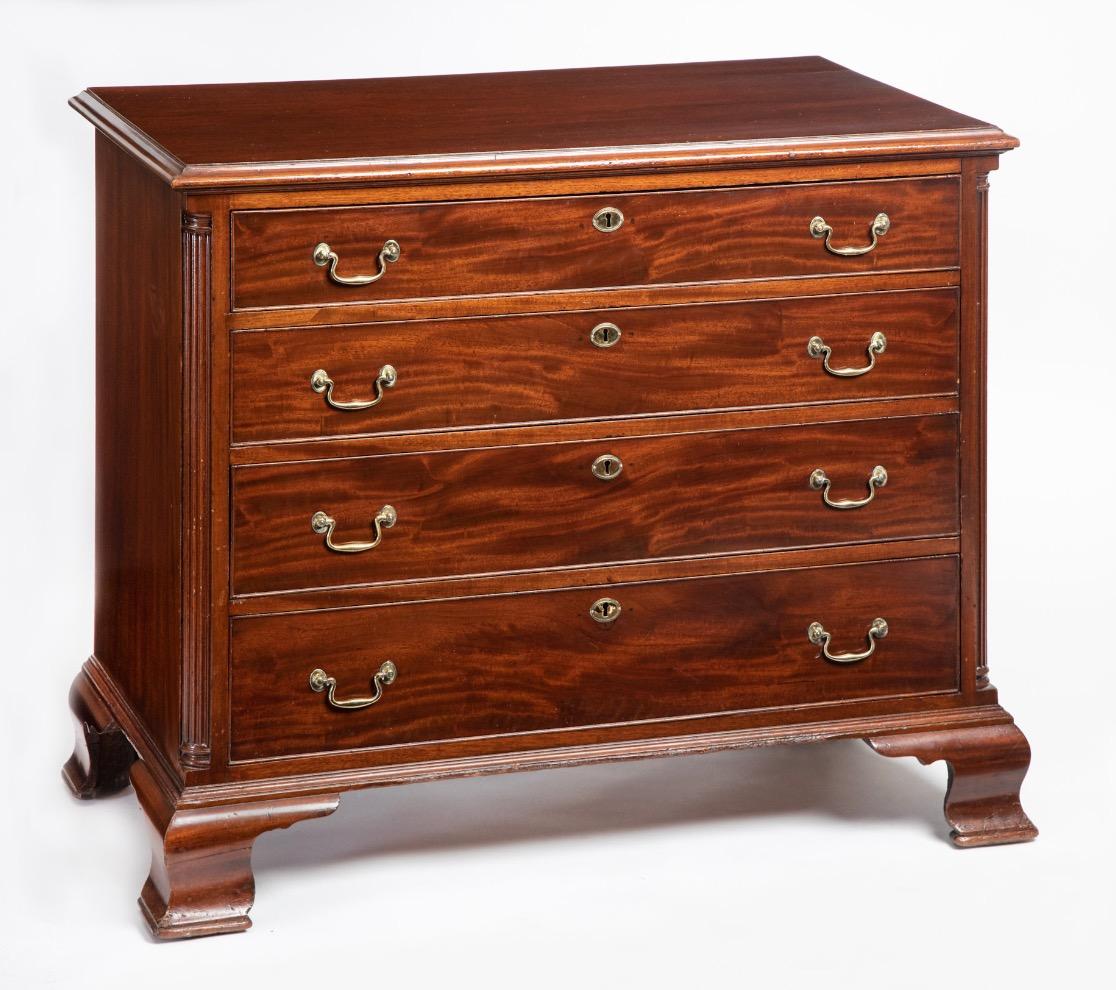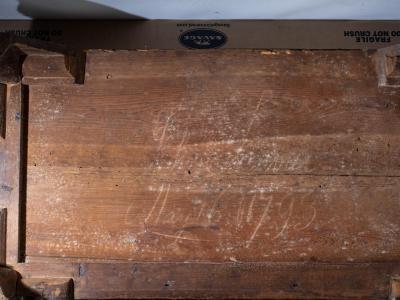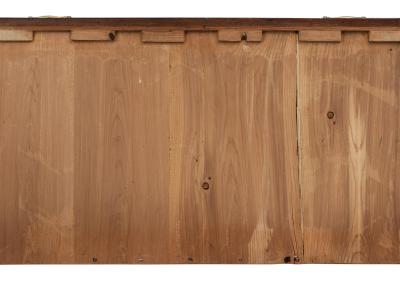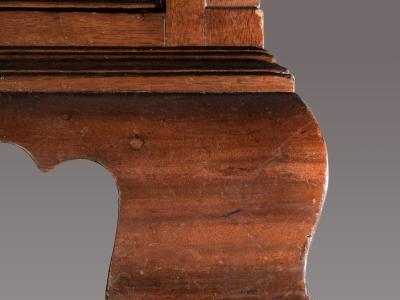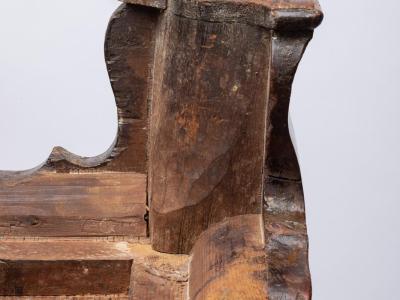Chest of four drawers (one of a pair)
Odessa, Delaware
1793
Maker
John Janvier Sr. (1749–1801)
Measurements
34 1/4 in x 41 1/2 in x 22 3/4 in
Materials
Mahogany; tulip poplar (drawer sides, dustboards, most drawer backs), hard pine (drawer fronts, drawer blades), white cedar (case bottom, glue blocks and rear facings of feet)
Credit Line
Historic Odessa Foundation
Accession Number
2020.132
Inscription
“John Janvier / May 16 1793” is in chalk on the outside of the chest bottom; “Bureau belonged to / William Corbit / [illegible, possibly “Baptised”] 1745 / [illegible, possibly “Died”] 1818” in ink on paper attached to the upper right of the chest back.
Condition Notes
The escutcheon plates are at least the third set.
Provenance
The pair of chests descended from William Corbit to his son Daniel. This chest then descended through the families of Daniel’s children Daniel Wheeler Corbit and Louisa A. Corbit, to the heirs of Eliza Naudain Corbit and Preston Lea, respectively.
Comments
This chest of four graduated drawers is a pair with acc. no. 2020.115. William Corbit’s estate inventory listed “1 pr. of bereaus Mahogy . . . $25.00” in the “Front Chamber East corner,” now called the Long Room on the second floor. The pair was among the highest valued items in the house. In the 1845 division of William’s furnishings between his two surviving children, Daniel and Sarah, an entry described “2 Bureaus formerly in the Long Room” at $10.00, further substantiating the provenance of these chests. At that time, Daniel acquired his sister’s portion, and the pair was subsequently divided between two male heirs and passed on to their twenty-first-century owners. This pair of chests is extraordinarily rare in early American furniture history and its reassembly as a pair remarkable.
Each chest embodies construction features of patriarch John Janvier’s work. Drawer bottoms have multiple, closely spaced glue blocks on the front and sides and an abundance of nails across the back edge. The large ogee bracket feet in the front flare outward slightly and stand on platforms of wood that create the bottom molding, a relatively unusual practice. Another Janvier characteristic appears in the fluted corner columns that end in niches at the top and a half round at the bottom. Although the mix of features positively identifies this pair of chests as the work of John Janvier, his signature and date in chalk on the outside bottom of chest 2020.132 resolves any uncertainties. The two chests are identical in all respects, except this chest has a top board that overhangs the back by 1 1/2 inches more than the other, which has little overhang. There is no obvious explanation for this small difference.
The 1793 date of manufacture raises the question of what circumstances caused their purchase at that time. When William Corbit bought the pair in 1793, his domestic circumstances were in flux. In 1791 he married Mary Cowgill, his fourth wife, who bore William yet another child in 1792. At that time, Pennell, the eldest child, went to Philadelphia to learn the tanning trade, thus simplifying the household by his absence. In 1794 the entire Corbit family moved from Odessa to Philadelphia for several years.
Bibliography
Sweeney, Grandeur, 101, 103, 114.
Zimmerman, A Storied Past, 78-80.
